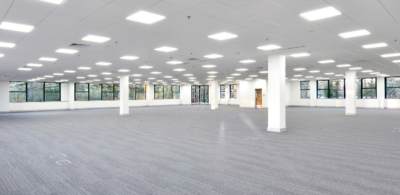In this series of posts, we will explore the two major forces that law firms must consider in designing offices that support their futures: economic pressures and the influx of millennials in the workforce.
Since the recession of 2008, and with increasing global competition, businesses of all kinds — including law firms — have had to tighten their belts considerably. In this new economic reality, they must do a lot more with a lot less without compromising the quality of their products and services or skimping on employing a talented workforce to serve their customers.
Specifically, “less” for the law firm means reducing their office footprint and leasing costs. Historically, office occupancy represents the law firm’s second-largest expense — after employee compensation — and many firms are adjusting accordingly in several ways:
- Densification: Putting more people into less space — an important step since attorneys traditionally occupy 2 to 2.5 times more square footage per person than in other industries
- Bifurcation: Establishing satellite offices in lower-cost locations — a tactic often driven by alternative-fee arrangements, which are becoming the norm in the legal profession
- Moving support services and non-legal functions to lower-cost facilities
CASE IN POINT: PAUL HASTINGS
Law firm Paul Hastings had to cut costs, so they moved their New York City office to space in Midtown Manhattan, reducing their square footage by 25%. But, they aren’t reducing headcount. Quite the contrary — they plan to add 40+ attorneys over the next few years.
While the firm has cut real estate costs, they realized they still need to provide a working environment that appeals to younger associates in order to attract and retain top talent. They have done just that — not with a radical redesign of spaces as other firms have done, but by reimagining the office for junior associates with decisions such as:
- Downsized library and file rooms in favor of more productive use of space
- Smaller individual offices
- Corner offices to be replaced by common meeting areas
- 12-cubicle pods with glass walls — many in prime windowed space — for junior associates, combining privacy with an open layout that enhances collaboration

“[People now coming out of law school are] used to working in cafés, and they want to sit next to their colleagues. We couldn’t have a totally open plan, because lawyers still need their offices. But those offices don’t need to be as big as before,” explained Barry Brooks, chairman of the Paul Hastings New York office.
Added Brooks, “I really do believe first- and second-year associates will benefit from true collaboration. They feed off each other.”
While reducing the office footprint and leasing costs can make a significant impact on overall expenses, sustainable profitability also entails taking into account the changing demographics of the workforce. A new generation of attorneys are now in — or coming into — the legal profession. They will be major revenue generators and in time will become the firm’s decision-makers.
In the next post in this series, we will take a closer look at what this means for the law firm — in particular, as it affects decisions on law office design.
Also: Read Part 1 | Read Part 3 | Read Part 4 | Read Part 5
As President of National Office Services, Cynthia leads Colliers’ national office platform across service lines including office leasing, representing tenants and landlords, investment sales, leasing agency and property management.

 Colliers Insights Team
Colliers Insights Team
 Aaron Jodka
Aaron Jodka
 Amber Merrigan
Amber Merrigan
 Andrew Steele
Andrew Steele